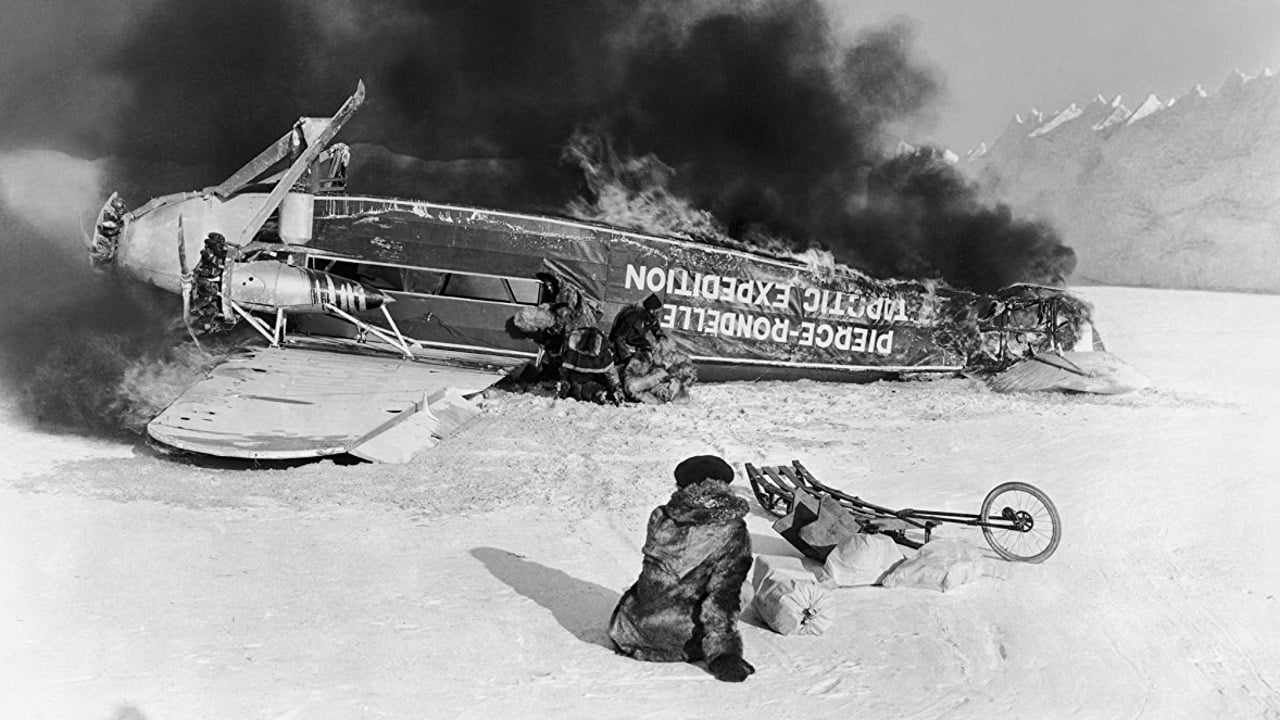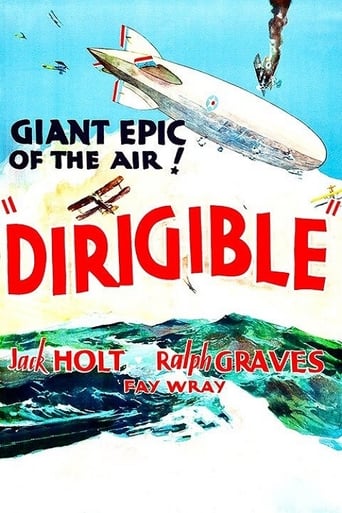

The greatest movie ever!
... View MoreThat was an excellent one.
... View MorePerfectly adorable
... View MoreExcellent, a Must See
... View MoreFor those interested in the history of aviation, the artful integration of old Navy footage of the Los Angeles airship (a German-built Zeppelin which was the 4th aircraft to cross the Atlantic), including footage of the experimental underside mooring mast used for docking an airplane in flight, and the Lakehurst field and hangar, all offer a wonderful slice of history. This footage, and the parts of the film which show the interior of this airship and its mock-ups and use, are wonderful, and many other elements provide a wonderful view of what the world looks like through a 1931 lens. It is interesting to see how some things (parts of the Navy ships), do not look all that dated, while other elements are radically different. This alone makes this film a very worthwhile, and trumps all the issues and complaints below. For many, this alone makes it worthy of a 9 out of 10, although for those without this interest, it is more like a 6.At the story level, there are a lot of holes. There is an inconsistent and totally unbelievable romance kludged on, with a Fay Wray performance that doesn't work, and will leave you scratching your head. This part is a 1 or 2 out of 10. Like other scripts which take a little bit of current technology and try to extrapolate to spin out a story without really understanding the technology, some parts seems pretty silly today, but this was the view from 1931. The writing seems to be oblivious to the service ceiling of the craft, and the limitations imposed by the large surface area and low speed of the craft when exposed to winds, especially as channeled by terrain. However, in the era shortly before the end of serious airship use, they were losing them at an alarming rate, and the Los Angeles was one of the few that survived to be decommissioned and disassembled.**** SPOILERS BELOW **** The plot has issues. Bravado and personal agendas trump planning on important expeditions and military (Navy) ops (a failing shared with Capra's 1929 "Flight", also starring Holt and Graves, which stretched bravado and credulity even further). Here we are to believe that "Frisky", upon successfully reaching the South Pole, but having dropped most critical supplies to lighten the load, decides to chance a landing on an unknown surface, in an area where no rescue would be possible (per their orders). We are then given scenes at the South Pole which do not represent conditions at the pole. (My uncle was at Byrd Station, and it gets pretty cold there, with average summer temps close to -30C, and it appears that the north and south hemispheres are both in summer, so we are also left to wonder if they understood they are reversed south of the equator.) When a rescue does come, instead of sending people down the rescue lines, they parachute in from a very low altitude for dramatic effect, but then get pulled back in by the lines. Okay, you get to see cool parachuting footage from 1931, so I guess its okay. Overall, a great slice of history with contemporary use of (now) archival footage, but the plot and romance drag the ratings down.
... View MoreDirigible was the last film that Frank Capra made with Jack Holt and Ralph Graves about the armed services. In this last one the two of them are more like James Cagney and Pat O'Brien than ever. Dirigible also resembles as the other two Graves/Holt films a film that John Ford was more likely to direct.Again the two men clash over a woman, this time Fay Wray who is married to Graves, but who is being driven nuts by Graves's irresponsibility as a flier. Give me one of those lighter than air guys instead and good friend Holt fills the bill.The film echoes the headlines of the time with the country watching the exploits of Admiral Richard E. Byrd and his polar expeditions. Both Holt and Graves go to the South Pole and each has to rescue the other at times. There is a very poignant performance by Roscoe Karns who usually played fast talking annoying characters who were entertaining, but hardly endearing. Karns plays a frostbitten marine who is truly suffering and you really feel for what he's going through.The film was shot according to the Citadel Film series book on the Films of Frank Capra at a dirigible training facility that was eventually closed down and the land was taken by the newly built Santa Anita racetrack later in the decade. The flight sequences were done in the air, just like Howard Hughes's Hell's Angels was.It's a good action film, I wonder though if John Ford could have gotten more out of it, Dirigible is definitely more his kind of film.
... View MoreIn addition to the films Submarine and Flight, Frank Capra directed a third film with both Jack Holt and Ralph Graves: Dirigible. Originally set to be a follow-up to Wings at Paramount, it was eventually sold to poverty row Columbia. It's a heroic adventure story about competing naval officers who attempt to be the first to reach the South Pole. Holt attempts to do it via dirigible and Graves tries the conventional way by ship and sea plane. In between them there's a girl of course: Fay Wray. In their films together, Holt is always the more experienced individual offering some gentlemanly levity to a given situation; where as, Graves is often the young hothead recruit or inexperienced pilot who needs his wings clipped.In Dirigible, Capra features the airship throughout the film, and it's probably one of the few films to do so. Lots of aerial footage of Holt commanding the dirigible and Graves as a pilot move the creaky plot forward. The film was actually based on a real life incident and adapted by Jo Swerling and Dorothy Howell based on Frank Wead's story. As in many films from this period, an obligatory romantic subplot is tacked on, which kind of detracts from the film. Fay Wray is Helen Pierce, Graves' wife. The script fails Wray as she acts discombobulated throughout the film. She lives Graves, but can't stand the danger he readily embraces. Meanwhile, good guy Holt, who plays second fiddle, offers a shoulder to cry on and rescues the big lug Graves on top of it, but he doesn't get the girl. OK as entertainment, but a notch below most of Capra's efforts. **1/2 of 4 stars.
... View MoreA reasonably decent motion picture for its time, the one attribute that makes this film stand out from its standard storyline, is its footage and scenes regarding dirigibles. When this film was released in 1931, it was the golden age of zeppelin travel, and the crash of the Hindenburg, which doomed this type of transportation, was still five years in the future. There were numerous scenes shot at Lakehurst Naval Air station, where ironically the Hindenburg crashed, that was the center of dirigible activity at the time for the U.S. Navy. As someone who is interested in this subject, I found this part of the movie fascinating as well as the part of the story that took you behind the scenes of airship travel and how much danger could be involved. The riveting scene dealing with the crash of a dirigible in a violent storm brought to mind the U.S. Navy zeppelin Akron, launched the same year as this film, which was destroyed in a similar storm only two years later. It was also interesting to see actress Fay Wray two years before she would gain fame with her role in King Kong. I had the opportunity to catch this film recently during an airing on the TCM cable channel and would recommend it for anyone with a similar interest.
... View More